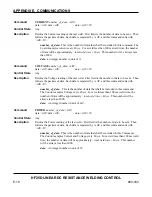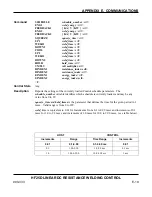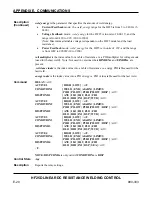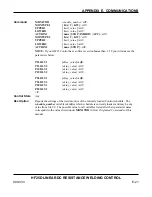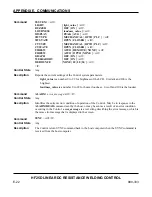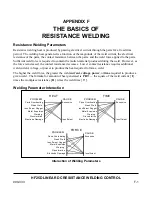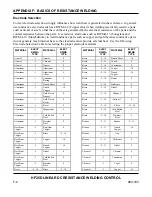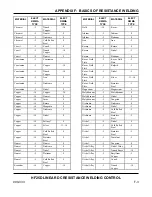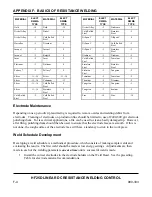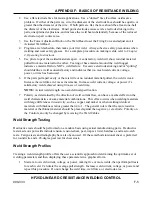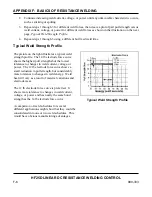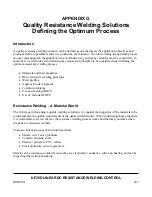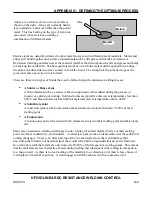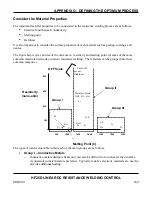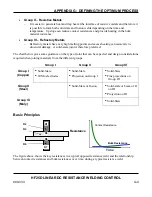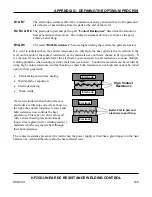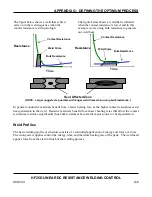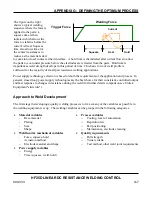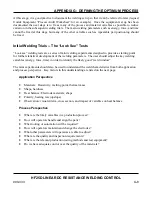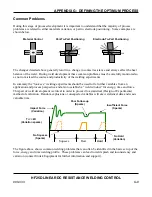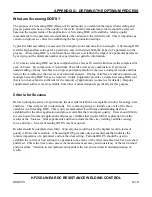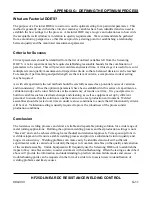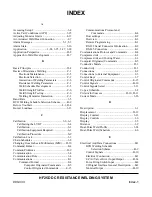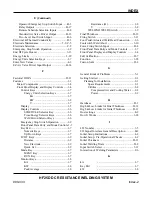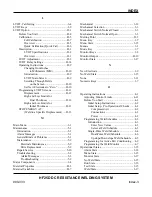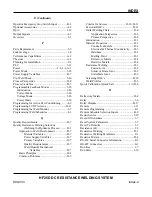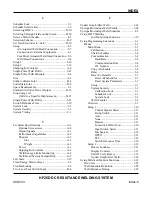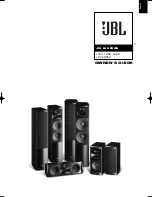
APPENDIX G: DEFINING THE OPTIMUM PROCESS
HF25D LINEAR DC RESISTANCE WELDING CONTROL
990-333
G-2
Alloys are a mixture of two or more metals as
shown on the right. Alloys are normally harder,
less conductive, and more brittle than the parent
metal. This has bearing on the type of joint one
can expect when resistance-welding a
combination of different metals.
Metals atoms are naturally attracted to other metal atoms even in different parent materials. Metals and
alloys will bond together once surface contaminants such as dirt grease and oxides are removed.
Resistance welding generates heat at the material interface that decomposes the dirt and grease and helps
to break up the oxide film. The heat generated softens or melts the metal and the applied force brings
the atoms on either side into close contact to form the bond. The strength of the joint develops as the
joint cools and a new structure is formed.
There are three main types of bonds that can be formed using the resistance welding process:
•
A Solder or Braze Joint
A filler material such as a solder or braze compound is either added during the process or
present as a plating or coating. Soldered joints are typically achieved at temperatures less than
400
°
C and brazed joints such as Sil-Phos materials melt at temperatures above 400
°
C.
•
A Solid-State Joint
A solid state joint can be formed when the materials are heated to between 70-80% of their
melting point.
•
A Fusion Joint
A fusion joint can be formed when both metals are heated to their melting point and their atoms
mix.
Many micro resistance-welding challenges involve joining dissimilar metals in terms of their melting
point, electrical conductivity, and hardness. A solid-state joint can be an ideal solution for these difficult
joining challenges. There is no direct mixing of the two materials across the weld interface thus
preventing the formation of harmful alloys that could form brittle compounds that are easily fractured.
In a solid-state joint the metals are only heated to 70-80% of their respective melting points. This means
that the materials are less thermally stressed during heating and subsequent joint cooling in comparison
to a fusion weld. As there is no real melting of the materials in a solid-state joint there is less chance of
weld splash or material expulsion. A weld nugget can still be achieved with a solid-state joint.
Metal B
Metal A
Alloy
Содержание HF25A
Страница 9: ...HF25D DC RESISTANCE WELDING SYSTEM 990 333 ix ...
Страница 10: ......
Страница 20: ......
Страница 84: ...CHAPTER 6 CALIBRATION HF25D DC RESISTANCE WELDING SYSTEM 990 333 6 4 Final Calibration Setup ...
Страница 113: ......
Страница 129: ......
Страница 153: ......
Страница 171: ......

